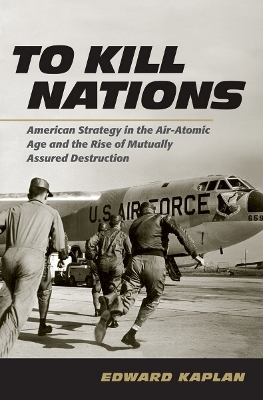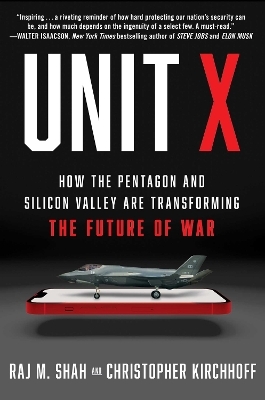
To Kill Nations
American Strategy in the Air-Atomic Age and the Rise of Mutually Assured Destruction
Seiten
2020
Cornell University Press (Verlag)
978-1-5017-5204-9 (ISBN)
Cornell University Press (Verlag)
978-1-5017-5204-9 (ISBN)
"Edward Kaplan's To Kill Nations is a fascinating work that packs a thermonuclear punch of ideas and arguments... The work is suitable for anyone from advanced undergraduates to experts in the field."
― Strategy Bridge
In To Kill Nations, Edward Kaplan traces the evolution of American strategic airpower and preparation for nuclear war from this early air-atomic era to a later period (1950–1965) in which the Soviet Union's atomic capability, accelerated by thermonuclear weapons and ballistic missiles, made American strategic assets vulnerable and gradually undermined air-atomic strategy.
Kaplan throws into question both the inevitability and preferability of the strategic doctrine of MAD. He looks at the process by which cultural, institutional, and strategic ideas about MAD took shape and makes insightful use of the comparison between generals who thought they could win a nuclear war and the cold institutional logic of the suicide pact that was MAD. Kaplan also offers a reappraisal of Eisenhower's nuclear strategy and diplomacy to make a case for the marginal viability of air-atomic military power even in an era of ballistic missiles.
― Strategy Bridge
In To Kill Nations, Edward Kaplan traces the evolution of American strategic airpower and preparation for nuclear war from this early air-atomic era to a later period (1950–1965) in which the Soviet Union's atomic capability, accelerated by thermonuclear weapons and ballistic missiles, made American strategic assets vulnerable and gradually undermined air-atomic strategy.
Kaplan throws into question both the inevitability and preferability of the strategic doctrine of MAD. He looks at the process by which cultural, institutional, and strategic ideas about MAD took shape and makes insightful use of the comparison between generals who thought they could win a nuclear war and the cold institutional logic of the suicide pact that was MAD. Kaplan also offers a reappraisal of Eisenhower's nuclear strategy and diplomacy to make a case for the marginal viability of air-atomic military power even in an era of ballistic missiles.
Edward Kaplan is Associate Professor at the Army War College. He is coeditor of Atlas for Introduction to Military History and editor of High Flight.
Introduction
1. Antecedents
2. Declaration, Action, and the Air-Atomic Strategy
3. Finding a Place
4. The Fantastic Compression of Time
5. To Kill a Nation
6. Stalemate, Finite Deterrence, Polaris, and SIOP-62
7. New Sheriff in Town
8. End of an Era
Conclusion
Key to Sources and Abbreviations
Notes
Index
| Erscheinungsdatum | 17.08.2020 |
|---|---|
| Zusatzinfo | 1 Halftones, black and white |
| Verlagsort | Ithaca |
| Sprache | englisch |
| Maße | 155 x 235 mm |
| Gewicht | 454 g |
| Themenwelt | Natur / Technik ► Fahrzeuge / Flugzeuge / Schiffe ► Militärfahrzeuge / -flugzeuge / -schiffe |
| Sozialwissenschaften ► Politik / Verwaltung | |
| ISBN-10 | 1-5017-5204-9 / 1501752049 |
| ISBN-13 | 978-1-5017-5204-9 / 9781501752049 |
| Zustand | Neuware |
| Informationen gemäß Produktsicherheitsverordnung (GPSR) | |
| Haben Sie eine Frage zum Produkt? |
Mehr entdecken
aus dem Bereich
aus dem Bereich
colonial violence and new landscapes of resistance
Buch | Softcover (2024)
Pluto Press (Verlag)
28,65 €
how the Pentagon and Silicon Valley are transforming the future of …
Buch | Hardcover (2024)
Simon & Schuster (Verlag)
24,90 €


